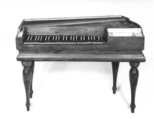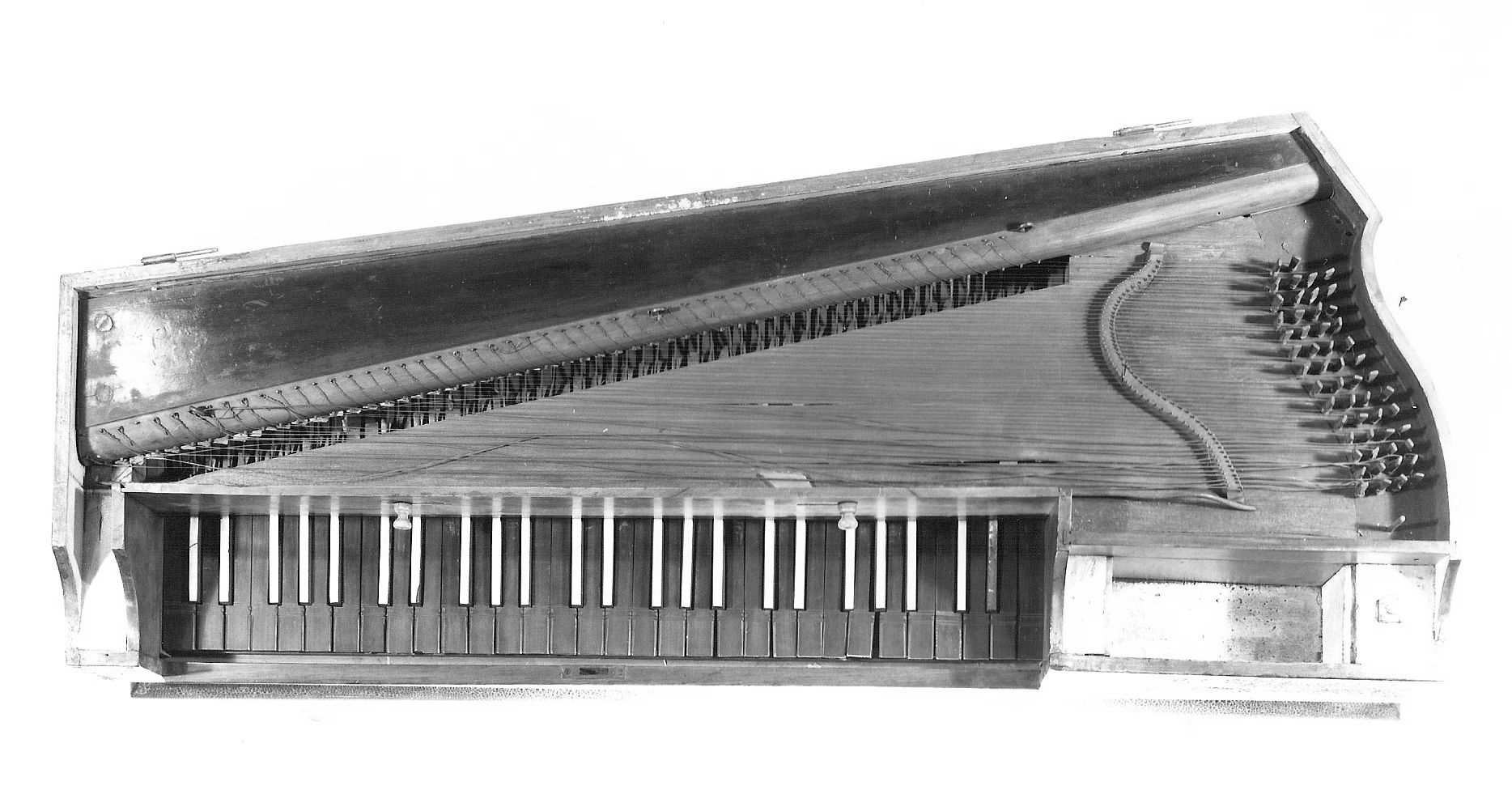Square Piano
Attributed to Johann Matthäus Schmahl German
Not on view
The shape of the case of this piano is made to resemble a harp lying on its side. Mozart supposedly carried a piano like this for practicing on his travels. Schmahl referred to this type of instrument as a liegende harfe, or harp piano. This type of instrument was probably made to imitate the hammered dulcimers that were popular at the time, especially the type known as pantalons, made famous by the virtuoso player Hebenstreit Pantaleone. There are two knobs over the keyboard, one controls a mute and the other interposes leather tabs between the hammers and strings. By using these two stops together, the instrument has a more familiar piano sounding tone. Each of the surviving instruments of this form is of a different design, indicating that Schmahl was building them one at a time and not in batches. These utilitarian instruments typify provincial workmanship in southern Germany, outside the mainstream of development.
Technical description: Irregular trapezoidal case of painted and/or varnished softwood on four turned legs,; compass C-f3 (54 keys); black stained naturals, heads notched between two pairs of score lines, embossed paper or parchment fronts; bone slips over black stained accidentals; soundboard extending over key levers; concave fallboard and indentation at lower edge of case; thick hitchpin rail with curved front holding nut pins, with strings bending upwards from nut pins to hitchpins, unpierced oblong tuning pins; lid of panel-and-frame construction with moldings bordering panel edges; right side of case curving inward from front, then outward, ending with a straight piece joining the back; two handstops over keyboard, left activating a harp stop, right controlling a mute (sordin) - felt-lined board above strings very close to bridge; primitive Anglo-German action with no escapement, uncovered hammers, hammer shanks pivoted on longitudinal gut cord; action removed through opening at rear of case; no dampers; single-strung throughout, no wound strings; fragments of black and red ink manuscript glued under soundboard; stained and varnished spruce soundboard less than 1 mm thick; panel over back case opening missing.
Due to rights restrictions, this image cannot be enlarged, viewed at full screen, or downloaded.
This artwork is meant to be viewed from right to left. Scroll left to view more.



